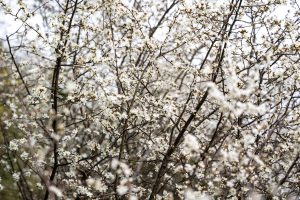Lapwings flock
Lapwings can be seen in large flocks at this time of year, I know of two flocks. There is a flock of up to 1400 birds near the Welland between Gull Farm and New road, TF2314, and another flock of 1200 birds in Baston or Langtoft Fen. Both flocks are usually on a field that is drilled with winter wheat and was rape in 2012. They are on a field that was previously rape because the rape crop attracts more slugs than other crops. They are mostly resting during the daytime because most of their feeding is done at night.
At dusk the Lapwings will disperse to many fields in the area to feed and fly back to their resting field at dawn. If there is a tractor working in their area during the day and is exposing worms or other insects they will go and feed, depending of course how many insects they found the night before.
Later in this month when there are less tractors working and insects tend to feed underground because of frosts they will go to the Wash to feed on the intertidal zone along with the Knot, Godwits, Dunlin and other shore birds will move south west. The colder the winter the further south and west they go. I often wonder how many go south and west to perish in the Atlantic ocean.
Nichoals
At dusk the Lapwings will disperse to many fields in the area to feed and fly back to their resting field at dawn. If there is a tractor working in their area during the day and is exposing worms or other insects they will go and feed, depending of course how many insects they found the night before.
Later in this month when there are less tractors working and insects tend to feed underground because of frosts they will go to the Wash to feed on the intertidal zone along with the Knot, Godwits, Dunlin and other shore birds will move south west. The colder the winter the further south and west they go. I often wonder how many go south and west to perish in the Atlantic ocean.
Nichoals


